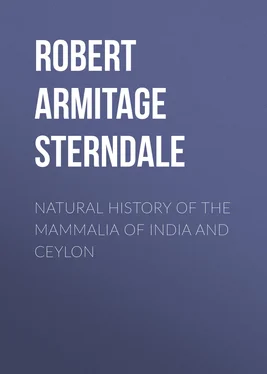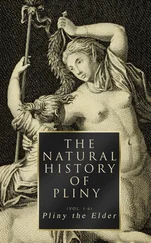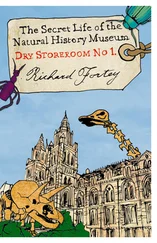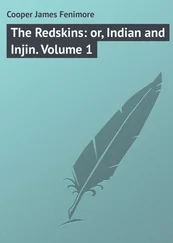Robert Armitage Sterndale - Natural History of the Mammalia of India and Ceylon
Здесь есть возможность читать онлайн «Robert Armitage Sterndale - Natural History of the Mammalia of India and Ceylon» — ознакомительный отрывок электронной книги совершенно бесплатно, а после прочтения отрывка купить полную версию. В некоторых случаях можно слушать аудио, скачать через торрент в формате fb2 и присутствует краткое содержание. Жанр: foreign_edu, Биология, на английском языке. Описание произведения, (предисловие) а так же отзывы посетителей доступны на портале библиотеки ЛибКат.
- Название:Natural History of the Mammalia of India and Ceylon
- Автор:
- Жанр:
- Год:неизвестен
- ISBN:нет данных
- Рейтинг книги:5 / 5. Голосов: 1
-
Избранное:Добавить в избранное
- Отзывы:
-
Ваша оценка:
- 100
- 1
- 2
- 3
- 4
- 5
Natural History of the Mammalia of India and Ceylon: краткое содержание, описание и аннотация
Предлагаем к чтению аннотацию, описание, краткое содержание или предисловие (зависит от того, что написал сам автор книги «Natural History of the Mammalia of India and Ceylon»). Если вы не нашли необходимую информацию о книге — напишите в комментариях, мы постараемся отыскать её.
Natural History of the Mammalia of India and Ceylon — читать онлайн ознакомительный отрывок
Ниже представлен текст книги, разбитый по страницам. Система сохранения места последней прочитанной страницы, позволяет с удобством читать онлайн бесплатно книгу «Natural History of the Mammalia of India and Ceylon», без необходимости каждый раз заново искать на чём Вы остановились. Поставьте закладку, и сможете в любой момент перейти на страницу, на которой закончили чтение.
Интервал:
Закладка:
In The Asian of January 7th, 1879, page 68, a correspondent ("N. F. T. T.") writes that he obtained a specimen of this bear which was coal black throughout, with the exception of a dark dirty yellow on the lower lip, but of the usual crescentic white mark she had not a trace. This exceptional specimen was shot in Kumaon. Robinson, in his 'Account of Assam,' states that these bears are numerous there, and in some places accidents caused by them are not unfrequent.
All the Sun Bears are distinguished for their eccentric antics, conspicuous among which is the gift of walking about on their hind legs in a singularly human fashion. Those in the London Zoological Gardens invariably attract a crowd. They struggle together in a playful way, standing on their hind legs to wrestle. They fall and roll, and bite and hug most absurdly.
Captain J. H. Baldwin, in his 'Large and Small Game of Bengal,' puts this bear down as not only carnivorous, but a foul feeder. He says: "On my first visit to the hills I very soon learnt that this bear was a flesh-eater, so far as regards a sheep, goats, &c., but I could hardly believe that he would make a repast on such abominations (i.e. carrion), though the paharies repeatedly informed me that such was the case. One day, however, I saw a bear busy making a meal off a bullock that had died of disease, and had been thrown into the bed of a stream." In another page Captain Baldwin states that the Himalayan Bear is a good swimmer; he noticed one crossing the River Pindur in the flood, when, as he remarks, "no human being, however strong a swimmer, could have stemmed such a roaring rapid."
NATIVE NAME.— Mamh .
HABITAT.—Baluchistan.
DESCRIPTION.—Fur ranging from brown to brownish-black, otherwise as in last species.
This is a new species, brought to notice by Mr. W. T. Blanford, and named by him. The skull of the first specimen procured was scarcely distinguishable from that of a female of Ursus torquatus , and he was for a time apparently in doubt as to the distinctness of the species, taking the brown skin as merely a variety; but a subsequently received skull of an adult male seems to prove that it is a much smaller animal.
NATIVE NAME.— Wet-woon , Arracan.
HABITAT.—Burmah, Malay Peninsula and adjacent islands.

DESCRIPTION.—Smaller than U. torquatus , not exceeding four and a half feet in length. Fur black, brownish on the nose; the chest marked with a white crescent, or, in the Bornean variety, an orange-coloured heart-shaped patch; the claws are remarkably long; mouth and lower jaw dirty white; the lower part of the crescent prolonged in a narrow white streak down to the belly, where it is widened out into a large irregular spot. Marsden, in his 'History of Sumatra,' published towards the end of the last century, speaks of this bear under the name of Bruang (query: is our Bruin derived from this?), and mentions its habit of climbing the cocoa-nut trees to devour the tender part, or cabbage.
It is more tamable and docile than the Himalayan Sun Bear, and is even more eccentric in its ways. The one in the London "Zoo," when given a biscuit, lies down on its back, and passes it about from fore to hind paws, eyeing it affectionately, and making most comical noises as it rolls about. Sir Stamford Raffles writes of one which was in his possession for two years:—"He was brought up in the nursery with the children; and when admitted to my table, as was frequently the case, gave a proof of his taste by refusing to eat any fruit but mangosteens, or to drink any wine but champagne. The only time I ever knew him out of humour was on an occasion when no champagne was forthcoming. He was naturally of a playful and affectionate disposition, and it was never found necessary to chain or chastise him. It was usual for this bear, the cat, the dog, and a small blue mountain bird, or lory, of New Holland, to mess together and eat out of the same dish. His favourite playfellow was the dog, whose teasing and worrying was always borne, and returned with the utmost good humour and playfulness. As he grew up he became a very powerful animal, and in his rambles in the garden he would lay hold of the largest plantains, the stems of which he could scarcely embrace, and tear them up by the roots." The late General A. C. McMaster gives an equally amusing account of his pet of this species which was obtained in Burmah. "Ada," he writes, "is never out of temper, and always ready to play with any one. While she was with me, 'Ada' would not eat meat in any shape; but I was told by one of the ship's officers that another of the same species, 'Ethel' (also presented by me to the Committee of the People's Park of Madras, and by them sent to England), while coming over from Burmah killed and devoured a large fowl put into her cage. I do not doubt the killing , for at that time 'Ethel' had not long been caught, and was a little demon in temper, but I suspect that, while attention was taken off, some knowing lascar secured the body of the chicken, and gave her credit for having swallowed it. 'Ada's' greatest delight was in getting up small trees; even when she was a chubby infant I could, by merely striking the bark, or a branch some feet above her head, cause her to scramble up almost any tree. At this time poor 'Ada,' a Burman otter, and a large white poodle were, like many human beings of different tastes or pursuits, very fast friends." In another part he mentions having heard of a bear of this species who delighted in cherry brandy, "and on one occasion, having been indulged with an entire bottle of this insinuating beverage, got so completely intoxicated that it stole a bottle of blacking, and drank off the contents under the impression that they were some more of its favourite liquor. The owner of the bear told me that he saw it suffering from this strange mixture, and evidently with, as may easily be imagined, a terrible headache."
So much for the amusing side of the picture, now for the other.
Although strictly frugivorous, still it has been known to attack and devour man in cases of the greatest want, and it also occasionally devours small animals and birds, in the pursuit of which, according to Dr. Sal Müller, it prefers those that live on a vegetable diet. The Rev. Mr. Mason, in his writings about Burmah, says "they will occasionally attack man when alone;" he instances a bear upsetting two men on a raft, and he goes on to add that "last year a Karen of my acquaintance in Tonghoo was attacked by one, overcome, and left by the bear for dead." In this case there was no attempt to devour, and it may have been, as I have often observed with the Indian Sloth Bear, that such attacks are made by females with young.
Dr. Sal Müller states: "in his native forests this bear displays much zeal and ingenuity in discovering the nests of bees, and in extracting their contents by means of his teeth from the narrow orifices of the branches of the trees in which they are concealed."
The next species constitutes the genus Melursus of Meyer or Prochilus of Illiger. It is an awkward-shaped beast, from which it probably derives its name of "Sloth Bear," for it is not like the sloth in other respects. It has long shaggy hair, large curved claws (which is certainly another point of resemblance to the sloth), and a very much elongated mobile snout. Another peculiarity is in its dentition; instead of six incisors in the upper jaw it has only four.
Читать дальшеИнтервал:
Закладка:
Похожие книги на «Natural History of the Mammalia of India and Ceylon»
Представляем Вашему вниманию похожие книги на «Natural History of the Mammalia of India and Ceylon» списком для выбора. Мы отобрали схожую по названию и смыслу литературу в надежде предоставить читателям больше вариантов отыскать новые, интересные, ещё непрочитанные произведения.
Обсуждение, отзывы о книге «Natural History of the Mammalia of India and Ceylon» и просто собственные мнения читателей. Оставьте ваши комментарии, напишите, что Вы думаете о произведении, его смысле или главных героях. Укажите что конкретно понравилось, а что нет, и почему Вы так считаете.












